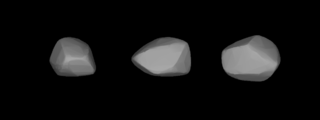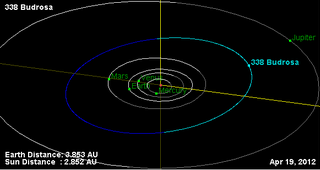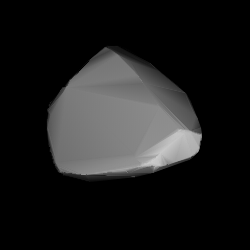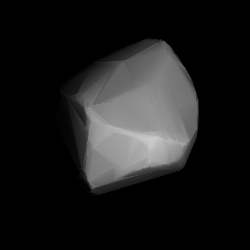
73 Klytia is a main-belt asteroid. It was the second and last asteroid discovery by the prolific comet discoverer Horace Tuttle, on April 7, 1862. It is named after Clytia, who loved Helios in Greek mythology. Of the first one hundred numbered asteroids, Klytia is the smallest.

366 Vincentina is a fairly large main belt asteroid.

263 Dresda is a typical Main belt asteroid. It belongs to the Koronis family of asteroids.

267 Tirza is a fairly sizeable, very dark Main belt asteroid.

Pierretta is a 46 km main-belt asteroid discovered on 28 Aug 1891 by Auguste Charlois at Nice.

338 Budrosa is a large Main belt asteroid. It is classified as an M-type asteroid. It was discovered by Auguste Charlois on 25 September 1892 in Nice.

343 Ostara is a background asteroid from the inner region of the asteroid belt. It was discovered by German astronomer Max Wolf at the Heidelberg Observatory on 15 November 1892.

394 Arduina is an asteroid from the central regions of the asteroid belt. It was discovered by A. Borrelly on 19 November 1894 in Marseilles.
443 Photographica is a typical Main belt asteroid. It is classified as an S-type asteroid.

509 Iolanda is a minor planet orbiting the Sun.

534 Nassovia is a minor planet orbiting the Sun. It is a member of the Koronis family of asteroids.
576 Emanuela is an asteroid orbiting the Sun.

621 Werdandi is a Themistian asteroid.

662 Newtonia is a minor planet, specifically an asteroid orbiting mostly in the asteroid belt.
668 Dora is an asteroid orbiting in the asteroid belt located roughly between the orbits of the planets Mars and Jupiter. The name may have been inspired by the asteroid's provisional designation 1908 DO.
768 Struveana is a minor planet orbiting the Sun. The asteroid was named jointly in honor of Baltic German astronomers Friedrich Georg Wilhelm von Struve, Otto Wilhelm von Struve and Karl Hermann Struve.
818 Kapteynia is a minor planet orbiting the Sun. This asteroid is named for the Dutch astronomer Jacobus Kapteyn.

852 Wladilena is a Phocaea asteroid from the inner region of the asteroid belt. It is named after the Russian Communist leader Vladimir Lenin.
878 Mildred is a minor planet in the main belt orbiting the Sun. It is the lowest numbered, and thus the namesake, of the Mildred family of asteroids, a subgroup of the Nysa family. The Mildred subgroup, and by extension 878 Mildred itself, is thought to have been formed by a recent fragmentation event from a larger asteroid.
6144 Kondojiro (1994 EQ3) is an asteroid discovered on 14 March 1994 by Kin Endate and Kazuro Watanabe at the Kitami Observatory in eastern Hokkaidō, Japan. It is named after Jiro Kondo, a Japanese Egyptologist and professor of archaeology at Waseda University.













